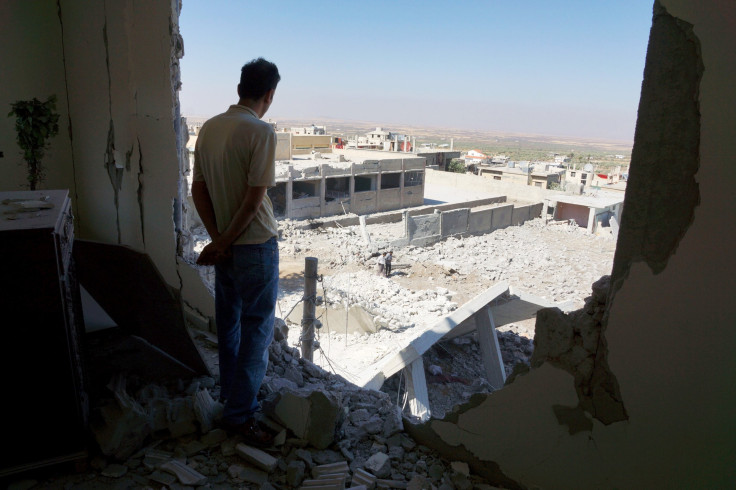US Launches Rockets Into Southern Syria From Jordan For First Time

The U.S.-led coalition fighting the Islamic State group fired three land-based artillery rockets into southern Syria from Jordan for the first time, the Pentagon said Friday. The strikes underscore the growing coordination between the coalition and opposition groups based in the southern Syria.
“It’s a good indicator that we can integrate with these southern-based opposition forces. And we fully intend to continue leveraging that,” Army Col. Steve Warren, a representative of the U.S. Defense Department, said at a media briefing Friday. “Six or so months ago, during testimony, the secretary [Ash Carter] talked about how our overall strategy includes strengthening the defense of Jordan. The Jordanians have been very close partners to us in the fight against terror writ large, and certainly, they’ve borne a heavy burden of displaced persons and migrants.”
As a result of the artillery strikes, the opposition groups in Syria were able to take control of a garrison held by the Islamic State group, aka ISIL or ISIS, in the town of Atompf. The same groups had launched a mortar raid on the town three months ago, but failed to gain control of any ground.
The opposition groups in the southern areas of Syria have been more successful than those in the northern reaches of the country, largely because ISIS is not as dominant there. The Southern Front is a group consisting of former members of the Free Syrian Army — the original rebels that revolted against President Bashar Assad after the Syrian Civil War began five years ago. They are mostly moderate rebels who primarily focus on fighting the regime in Daraa and Quneitra.
Celebrating our Revolution in the ancient city of Bosra alSham today, freed by #FSA's #Southern_Front#Daraa #Syria pic.twitter.com/X6rfgWn2ix
— Issam Al Reis (@south_front_sy) March 11, 2016
It is unclear how much coordination there is between the U.S. and the Southern Front. Some members of the group were trained under previous U.S. military programs at a base in Jordan, while others were armed under a CIA program that launched in 2013.
In the spring of 2013, the U.S. selected groups of rebels fighting with the Free Syrian Army to participate in a classified CIA-led program, which was formally announced in August of that year. The program allowed for the transfer of U.S.-made weapons to Turkey via other countries’ aircraft. The weapons were then driven into Syria on trucks. The program was partially funded by Saudi Arabia and other wealthy Sunni Muslim states. In 2014, the U.S. ramped up efforts to support the moderate opposition and began training several thousand rebels at a secret base in Jordan.
The emergence of ISIS set the rebels back. They had to fight on multiple fronts with comparatively few resources and dwindling American support. Now, though, it appears the U.S. is ramping up its military support of the rebels.
The rocket launches from Jordan came as international powers and the Syrian regime attempt to solidify a ceasefire agreement and negotiate peace. Although the ceasefire has technically been in place since the end of February, the opposition rebels in the northern part of the country have announced several violations by Russian aircraft. The Southern Front is largely against the ceasefire brokered by the U.S. and Russia because it allows the regime to target the area the opposition rebels control in Darayya, a suburb of the capital Damascus.
© Copyright IBTimes 2025. All rights reserved.





















